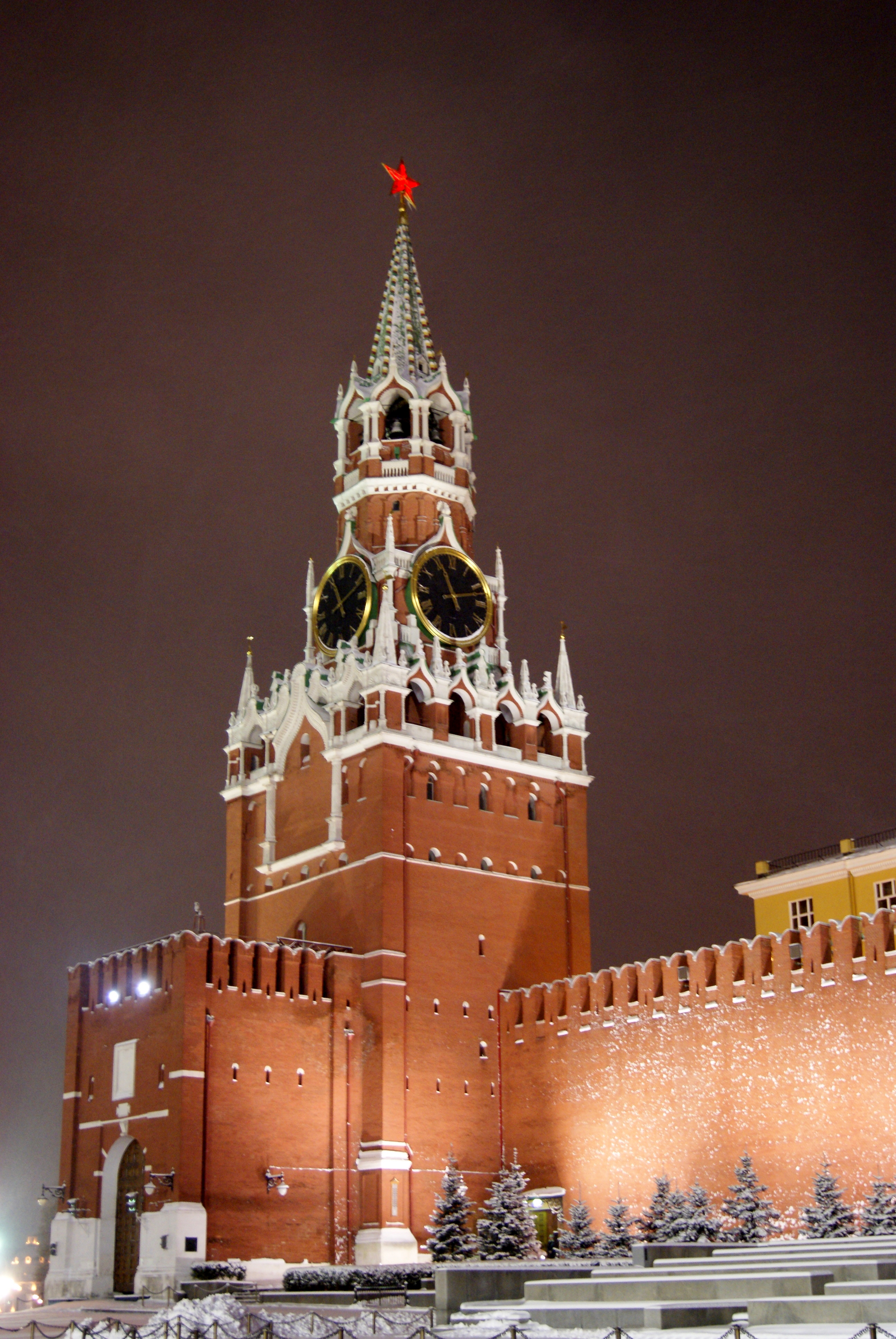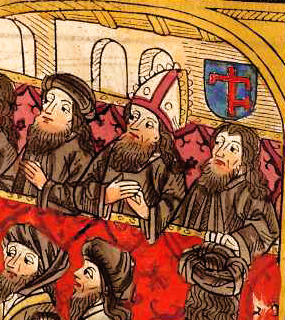|
Marko Pećki
Marko Pećki (village of Ljevoši, near Peć in Kosovo, Serbia, 1360 – Ljevoši, Kosovo, Serbia, after 1411) was a Serbian medieval writer and poet who lived at the time of Prince Lazar of Serbia and Stefan Lazarević. He is best known for the "Life of the Serbian Patriarch Ephraim" and other biographies. Biography Bishop Mark of Peć (hence Marko Pećki) belongs to a prominent place in the hesychast monastic hagiography from the time of Prince Lazar of Serbia and the Battle of Kosovo in 1389. He left his autobiographical data in his Letter to commemorate Gerasim and Euphemia (Jefimija). Marko was born in 1360 in a village near Peć in Serbian Kosovo, as the youngest of four sons, born into a priestly family. We do not know his baptismal name, however, we know that all four brothers were priests. His father's secular name was probably George because he chose Gerasim as his new name for his new monastic way of life, and as Hieromonk Gerasim, he went on to build the church of St. ... [...More Info...] [...Related Items...] OR: [Wikipedia] [Google] [Baidu] |
Peć
Peja (Definiteness, Indefinite Albanian language, Albanian Albanian morphology#Nouns (declension), form: ''Pejë'' ) or Peć ( sr-Cyrl, Пећ ) is the fourth largest List of cities and towns in Kosovo, city of Kosovo and seat of Peja Municipality and District of Peja, Peja District. It is situated in the region of Rugova (region), Rugova on the eastern section of the Accursed Mountains along Peja's Lumbardh in the western part of Kosovo. In medieval times the city, then commonly known under its Serbian name, was the seat of the Serbian Orthodox Church in 1346. The Patriarchate of Peć (monastery), Patriarchal monastery of Peć is a UNESCO World Heritage Site as part of the Medieval Monuments in Kosovo. Under Ottoman rule the city, then commonly known under the Turkish name ''İpek'', became a district capital with mosques and civil architecture. From the end of the nineteenth century until today, the city has been the site of nationalist aspirations and claims for both Albanians ... [...More Info...] [...Related Items...] OR: [Wikipedia] [Google] [Baidu] |
Lazar The Hilandarian
Lazar ( sr, Лазар, russian: Лазарь), also known as Lazar the Serb or Lazar the Hilandarian ( fl. 1404), was a Serbian Orthodox monk-scribe and horologist who invented and built the first known mechanical public clock in Russia in 1404. The clock, which also struck the hours, was built at the request of Grand Prince Vasily I of Moscow (r. 1389–1425). Prior to his arrival in Moscow, Lazar had served as a monk in the Serbian Hilandar monastery at Mount Athos. The clock tower was located in the palace behind the Cathedral of the Annunciation. However, the clock and the church in which it was located have not survived. Life A Serb, Lazar was born in the town of Prizren, in the Serbian Empire. He was a monk with the rank of ''crnorizac'' ( sr, црноризац, russian: чернец, ''černec'') serving at the Serbian Orthodox Hilandar monastery, a centre of Serbian religious and secular culture and "the first Serbian university", located on Mount Athos. Lazar likely l ... [...More Info...] [...Related Items...] OR: [Wikipedia] [Google] [Baidu] |
Nicodemus Of Tismana
Nikodim Tismanski, also known as Nikodim Osvećeni, Nikodim Vratnenski, Nikodim Grčić, and in Romanian, Nikodim de la Tismana (Prilep, today in North Macedonia, then Byzantine Empire, c. 1320 – Tismana, Walachia, now Romania, 26 December 1406), was a Christian monk scribe and translator who was the founder of monasteries, one in Serbia and two in Romania. In Serbian medieval history he is remembered for conveying hesychastic monastic traditions and as a member of a diplomatic and ecclesiastical mission to Constantinople in 1375. He was one of the followers of St. Gregory of Sinai. Sanctified in 1767 by the Eastern Orthodox Church, he is commemorated on 26 December. Also, he was canonized by the Romanian Orthodox Church in 1955. Origins Nicodemus who was born most probably in Prilep, was of mixed Greek-Serbian origin to a Greek father from Kastoria and a Serbian mother. Other researchers point to an Aromanian father and a Bulgarian mother. Serbian historian and academician D ... [...More Info...] [...Related Items...] OR: [Wikipedia] [Google] [Baidu] |
Dimitar Of Kratovo
Dimitar of Kratovo ( sr, Димитар Кратовски) was a 15th-century Slavic (https://pravoslavnaya.academic.ru/6167/%D0%94%D0%98%D0%9C%D0%98%D0%A2%D0%A0%D0%98%D0%99_%D0%9A%D0%A0%D0%90%D0%A2%D0%9E%D0%92%D0%95%D0%A6) writer and lexicographer, and one of the most important members of the during the Ottoman Empire. Biography We know next to nothing about his life. In all probability he was a priest or, even more likely, a monk. Dimitar was active in mid-15th century at the time when his town, Kratovo was in the hands of Ottomans for more than half a century. However, ore rich vicinity of the town and the wealth that stemmed from this source made it an important center for various arts, not least literature. In 1466 the Archbishop of Ohrid, Dorotheus, was searching for a learned men to translate the Syntagma of Matthew Blastares from Greek into Serbian because his cathedral seat did not have that book in the language that would be understood by natives. When he visited ... [...More Info...] [...Related Items...] OR: [Wikipedia] [Google] [Baidu] |
Rajčin Sudić
Rajčin Sudić (c. 1335-after 1360) was a Serbian monk- scribe who lived and worked during the time of Lord Vojihna, the father of Jefimija. From the inscription Rajčin Sudić left in the margin of the Chronicles written in the 14th Century, we know that he was a prisoner of some feudal ruler of that period. There is some evidence that this ruler was Vojihna because at the time he possessed many fiefs. It is possible that Sudić was a scapegoat of a vehement opponent of "clan government". That is usurpation of administrative posts by men of two, three and more fiefs, an abuse which threatened to follow the overthrow of Vojihna—he must have been accused by someone that Sudić allegedly conspired to assist Vojihna's enemies and was imprisoned for five months, along with another "accomplice" by the name of Kijevac. While in prison he wrote in "An Inscription": The probable date of the inscription is the year 1360. The manuscript in which that inscription was included was burnt ... [...More Info...] [...Related Items...] OR: [Wikipedia] [Google] [Baidu] |
Atanasije (scribe)
Atanasije and Atanasije the Serb ( sr-cyr, Атанасије; 1200–1265), a disciple of Saint Sava, was a Serbian monk-scribe who lived and worked in Serbia in the Middle Ages. In the 13th century, it was common for monk-scribes not to speak or write about themselves, always cognizant of the fact that their station in life was modest, focussing on the activities of their lords. It is not surprising that very little is known about him. His hymn to Saint Sava, however, has been preserved in Domentijan's biography of Saint Sava in the part describing the return of Saint Sava's relics from Trnovo, Bulgaria, to the Mileševa monastery in Raška. On that occasion, according to Domentijan, the monk-scribe Atanasije wrote and read the "Eulogy to Saint Sava". See also * Saint Sava the founder of Serbian medieval literature * Teodosije the Hilandarian (1246-1328), one of the most important Serbian writers in the Middle Ages * Elder Grigorije (fl. 1310-1355), builder of Saint Archangels M ... [...More Info...] [...Related Items...] OR: [Wikipedia] [Google] [Baidu] |
Romylos Of Vidin
Romylos of Vidin also known as Romylos of Ravanica or Romylus the Athonite (''Romil Svetogorac'', ''Romil Svetogorski''); ( bg, Ромил Бдински; sr, Ромил Раванички) was a 14th-century Bulgarian cleric, a disciple of Gregory of Sinai. He is also known as the teacher of Grigorije of Gornjak. He is regarded as part of both Bulgarian and Serbian literature. Biography He was born in Vidin, Tsardom of Vidin c. 1330 and died in the Ravanica Monastery, Serbia c. 1385. Romylos was among the brightest followers of the Hesychast tradition in the Eastern Orthodox Church in the 14th century. In the wake of the Ottoman conquest of Bulgaria Romylos was among the many Bulgarian intellectuals who emigrated to neighbouring Orthodox countries and brought their talents and texts. His tomb is in the church narthex of the Monastery of Ravanica, Serbian Despotate. Life He was born in the first quarter of the fourteenth century in the "valiant and glorious city Vidin", north ... [...More Info...] [...Related Items...] OR: [Wikipedia] [Google] [Baidu] |
Elder Siluan
Siluan ( sr-cyr, Силуан; 14th century) was a Serbian Orthodox monk and poet who lived and worked in the Hilandar monastery at Mount Athos in the 14th century. Very little is known about him. The mystical tradition of prayer known as hesychasm left a strong imprint in Serbian medieval literature and art, which is evident already in the works of Domentijan and Teodosije the Hilandarian, but most prominently in the writings of archbishop Danilo II, patriarch Jefrem, monk Isaija and Siluan. Siluan is the author of hymns to Saint Sava and St. Simeon (Stefan Nemanja). History knows of two Serbian monks called Siluan active on Athos, living two centuries apart, but researchers have been inclined to credit the 14th century Siluan with the authorship of ''Verses for St. Simeon'' and ''Verses for Sava''. The analyses of the two Old Serbian verbal ornaments, attributed to the 14th-century Siluan, appear in the work of Roman Jakobson; Siluan is presented as one of the most enlightened p ... [...More Info...] [...Related Items...] OR: [Wikipedia] [Google] [Baidu] |
Isaija The Monk
Isaija the Monk ( sr, Инок Исаија or in English: Inok Isaija; ca. 1300–after 1375), also known as Elder Isaija (Elder Isaiah) () and Isaija of Serres (Elder Isaiah of Serres) (), was a 14th-century Serbian monk, one of many Serbian monk-scribes in the Middle Ages who translated ancient Greek manuscripts into the Serbian recension of Old Church Slavonic. His major work is the translation of the works of Pseudo-Dionysius the Areopagite from Byzantine Greek. Isaija's commentaries on political events occur in the context of the fall of the Serbian principality of Serres in 1371, which led the descendants of these local governors to accept Ottoman suzerainty. As a young boy, Isaija joined the monastic life of the Serbian Orthodox Church affiliated to St. Joachim of Osogovo Monastery on Osogovo Mountain in northern Macedonia, and then to Hilandar Monastery on Mount Athos in Greece, where he spent the rest of his life. In Hilandar, he worked as a translator and became very ... [...More Info...] [...Related Items...] OR: [Wikipedia] [Google] [Baidu] |
Gregory Tsamblak
Gregory Tsamblak or Grigorij Camblak ( bg, Григорий Цамблак, sr-Cyr, Григорије Цамблак; c. 1365–1420) was a Bulgarian writer and cleric. He was the pretended Metropolitan of Lithuania between 1413 and 1420. A Bulgarian noble, Tsamblak lived and worked in Bulgaria, but also in Medieval Serbia and Kievan Rus'. His literary works represent a heritage of the national literature of Serbia, particularly the style of Old Serbian ''Vita'' made popular in the monasteries of the 12th century. Life He was born in Tarnovo, the capital of the Second Bulgarian Empire, the son of a rich family. His cousin was Cyprian, Metropolitan of Kiev. Tsamblak was a disciple of the prominent Bulgarian hesychast writer Patriarch Evtimiy of Bulgaria. Bulgaria fell under Ottoman domination following the Bulgarian-Ottoman Wars. Following this, he emigrated first to Constantinople, then became presbyter of the Church of Wallachia and Moldavia. He then went to Serbia where he wa ... [...More Info...] [...Related Items...] OR: [Wikipedia] [Google] [Baidu] |
Cyprian, Metropolitan Of Kiev
Cyprian ( bg, Киприан, russian: Киприан, be, Кіпрыян, uk, Кипріан) (c. 1336 – 16 September 1406) was the Metropolitan of Kiev, Russia and Lithuania (2 December 1375–12 February 1376) and the Metropolitan of Kyiv and All Rus' (12 February 1376–16 September 1406) in the Ecumenical Patriarchate of Constantinople. During both periods, he was opposed by rival hierarchs and by the Grand Prince of Moscow. He was known as a bright opinion writer, editor, translator, and book copyist.Shabuldo, F. Cyprian (КИПРІЯН)'. Encyclopedia of History of Ukraine. 2007 He is commemorated by the Russian Orthodox Church on May 27 and September 16 (by the Old style). Early life Cyprian was a clergyman of Bulgarian origin. He is supposed to have been born in aristocratic family of Tsamblak from the capital Tarnovo. After his upbringing, education, and worldview, he was a hesychast. As a young man Cyprian studied at Kilifarevo, just south of Tarnovo, where ... [...More Info...] [...Related Items...] OR: [Wikipedia] [Google] [Baidu] |
Constantine Of Kostenets
Constantine of Kostenets ( bg, Константин Костенечки, Konstantin Kostenechki; born ca. 1380, died after 1431), also known as Constantine the Philosopher ( sr, Константин Филозоф), was a medieval Bulgarian scholar, writer and chronicler, who spent most of his life in the Serbian Despotate. He is best known for his biography of Serbian despot Stefan Lazarević, which George Ostrogorsky described as "the most important historical work of old Serbian literature",Ostrogorsky, ''History of the Byzantine State'', translated by Joan Hussey, revised edition, (New Brunswick: Rutgers University Press, 1969), p. 471 and for writing the first Serbian philological study, ''Skazanije o pismenah'' (A History on the Letters). He followed the writing style of the Old Serbian ''vita'', first made popular in the Serbian scriptoria of the 12th century. Biography Constantine was born in Bulgaria, probably in Kostenets. In his youth, he attended school in the capital ... [...More Info...] [...Related Items...] OR: [Wikipedia] [Google] [Baidu] |




